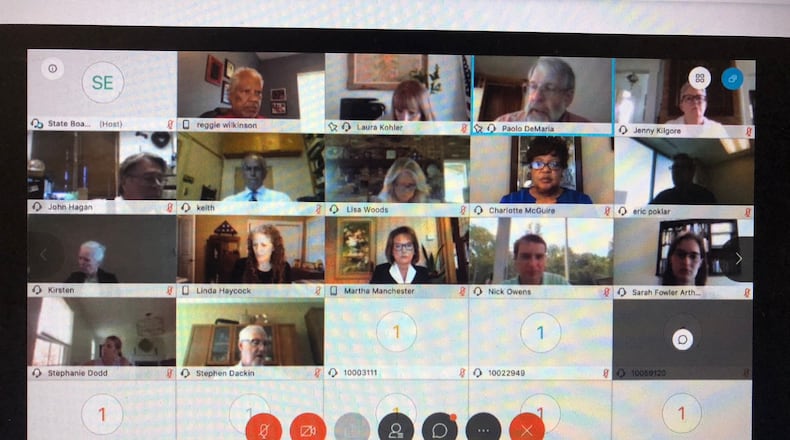MAY STORY: State officials discuss tentative fall school reopening plan
The hard part is, all four of those pieces are still up in the air — including how they affect the most basic decision of whether to hold traditional in-school classes, or online learning, or some combination.
While some feel like the school year just ended, DeMaria said planning for a very uncertain 2020-21 is in full swing.
“The start of school arguably is just around the corner, and districts are asking us for clarity on a number of things,” he said. “The legislature in scheduled to be in session for a couple more weeks. … If there are things that need to be in place by the start of the year, they’re likely going to want to act on those sooner than later.”
State school board member Stephanie Dodd asked DeMaria whether the state might make different recommendations on masks and distancing for large schools vs. small schools, or for areas hard-hit by COVID-19 vs. regions with very few cases.
RELATED: Legislators seek $100B in federal money for schools
DeMaria said some level of flexibility makes sense. He said he expects Department of Health guidance for schools to mirror other ODH documents, which have included one column of mandatory steps and a separate set of “recommended” moves.
Senate Bill 319, which was discussed for the first time by the Senate Education Committee on Tuesday, could address several specifics for 2020-21, and Committee Chair Peggy Lehner said several other amendments will be discussed on Wednesday.
The bill would allow students who weren’t able to take a state end-of-course exam to use their classroom grade toward graduation requirements. It also would allow special education professionals to provide services via “telehealth” means, and would remove some requirements from teacher, principal and charter school evaluations.
One piece of SB 319 that has caused controversy is a provision allowing schools to furlough teachers and other staff. The Ohio School Boards Association said the provision gives schools needed flexibility, while the Ohio Education Association, which represents teachers, called it an “overreach,” saying the issue is already addressed in existing law.
FUNDING: Federal stimulus for schools has clear winners and losers
But the biggest issue is simply whether students will attend school in their normal buildings.
State school board member Kirsten Hill argued against the “onerous level of changes” that schools faced this spring and that are being considered for 2020-21, given how few school-age children have become sick with COVID-19.
“To make everything sterile for everyone is impossible,” Hill said. “The sick need to quarantine versus controlling the healthy.”
DeMaria pointed to the many older teachers, bus drivers and other school employees who might be at greater risk, including those with health conditions. He also mentioned the issues of 1.7 million Ohio school children mixing with students and staff at schools, then returning home to mix with another set of adults.
PHOTOS: See valedictorians from Dayton-area schools’ Class of 2020
“The governor has been wrestling with these realities and he has to look at the health of all population segments of Ohio, and that’s what’s informing his steps,” he said.
About the Author

